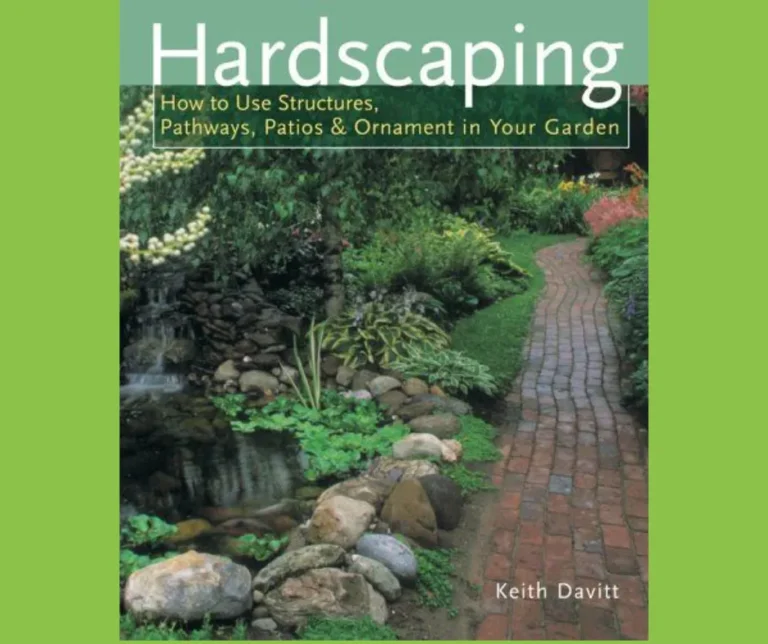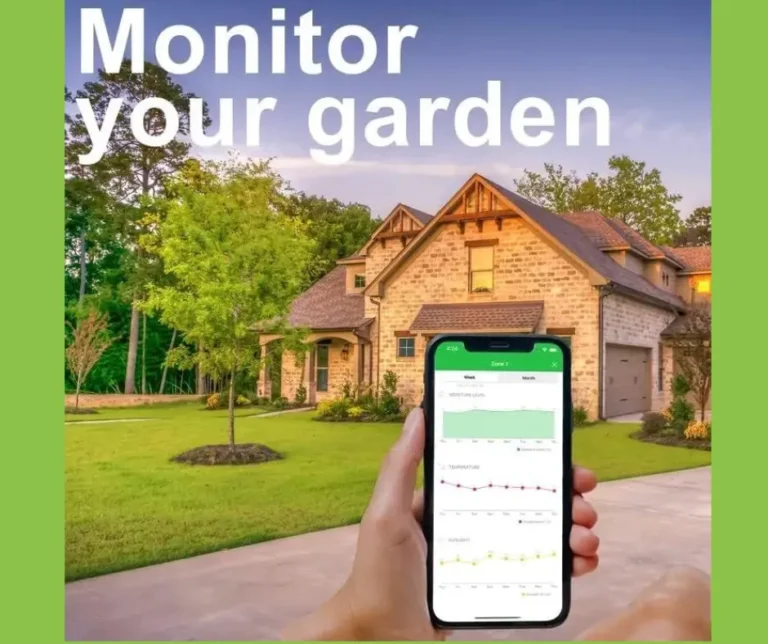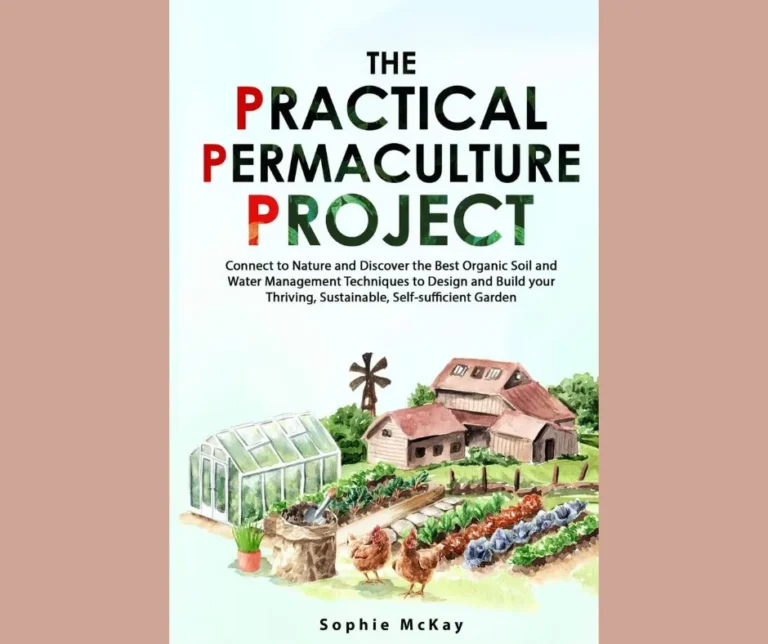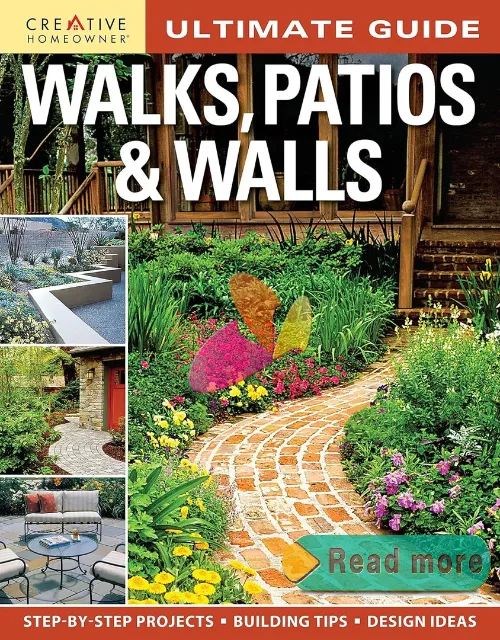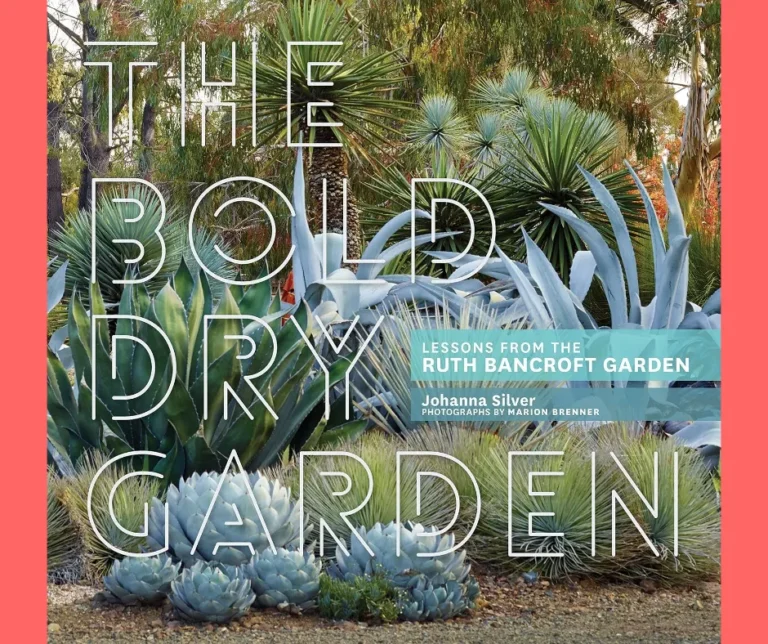Using The Right Plan For Your Landscape Design
In the realm of landscape design, the right planning can transform an ordinary outdoor space into a stunning retreat that reflects personal style and enhances the overall aesthetic of a home.
“Home Planners Complete Book of Landscape Plans” serves as an invaluable resource for homeowners, landscapers, and design enthusiasts alike, offering a comprehensive collection of meticulously crafted landscape plans suitable for a variety of settings and preferences.
This indispensable guide not only provides detailed layouts and specifications but also emphasizes the importance of harmonious design elements, taking into consideration factors such as climate, soil type, and ecological sustainability.
Each plan is thoughtfully designed to inspire creativity while ensuring functionality, making it easier for individuals to visualize their dream landscapes.
From lush gardens to serene patios, this book caters to diverse tastes and needs, bridging the gap between concept and execution.
Whether embarking on a new landscaping project or seeking to revitalize an existing outdoor area, readers will find expert insights and innovative ideas that empower them to curate their ideal outdoor environment.
With practical tips and clear illustrations, “Home Planners Complete Book of Landscape Plans” is a quintessential companion for Using The Right Plan For Your Landscape Design.
Table of Contents Using The Right Plan For Your Landscape Design
Comprehensive landscape plans for homeowners
Careful consideration of a property’s unique features is essential in developing effective landscape designs that enhance both aesthetics and functionality.
A well-structured plan integrates elements such as plant selection, hardscaping, and outdoor living spaces to create a harmonious environment that reflects the homeowner’s preferences and lifestyle.
It is important to assess the site’s topography, soil quality, sunlight exposure, and drainage patterns to ensure that the chosen plants thrive and the landscape remains sustainable over time.
Moreover, comprehensive landscape planning encourages the use of native plants to promote biodiversity and reduce the need for chemical interventions.
By incorporating irrigation systems and efficient maintenance practices, homeowners can significantly optimize water usage and minimize upkeep efforts.
Overall, a thoughtful landscape plan not only increases the property’s value but also enhances the quality of life, providing serene outdoor spaces for relaxation, entertainment, and connection with nature.
Detailed designs for various environments
Designing for diverse environments necessitates a tailored approach that addresses the specific conditions and requirements of each location.
For instance, coastal properties may benefit from salt-tolerant vegetation and robust erosion control measures, while urban settings require creative solutions to combat limited space and pollution.
A thorough understanding of local climate conditions, such as temperature fluctuations and rainfall patterns, is crucial in selecting appropriate materials and plants, ensuring that the landscape remains viable and appealing throughout the seasons.
In addition, incorporating multifunctional spaces can transform underutilized areas into vibrant and engaging environments.
This can include the integration of green roofs, vertical gardens, or community gathering spots that foster social interaction and promote environmental stewardship.
By prioritizing adaptability and resilience in the design process, landscape architects can create environments that not only meet immediate aesthetic desires but also contribute to the long-term sustainability and enjoyment of the space.
Suitable for all skill levels
The design strategies presented are crafted to be accessible to individuals across a wide spectrum of experience and expertise.
Whether a novice or an experienced practitioner, users will find practical guidance and inspiration that can be easily adapted to their specific needs and circumstances.
Clear illustrations and step-by-step instructions enable participants to engage with the material at their own pace, ensuring that even those new to landscape planning can confidently navigate the complexities of creating beautiful outdoor spaces.
Moreover, the variety of project examples caters to different preferences and styles, allowing for personal expression while adhering to fundamental design principles.
This inclusivity not only encourages creativity but also fosters a sense of accomplishment as individuals see their visions come to life.
Emphasizing both simplicity and sophistication, the resources provided empower everyone to embark on their landscaping journey, resulting in diverse and thriving environments that reflect the unique characteristics of each space.
Step-by-step instructions for implementation
Implementing the design strategies involves a systematic approach that combines careful planning with hands-on execution.
Begin by gathering all necessary materials and tools, ensuring that each step is clearly outlined to avoid potential setbacks.
The process typically starts with site assessment, where one evaluates the existing landscape, identifies key features, and determines the overall goals for the space.
Following this, users can proceed to layout planning, which involves mapping out the proposed design using either traditional methods or digital tools for accuracy.
Once the layout is established, attention shifts to preparation and installation.
This includes tasks such as soil preparation, plant selection, and the installation of hardscaping features.
Each task is broken down into manageable segments, with specific instructions detailing timelines, required quantities, and best practices.
Regular checkpoints are suggested throughout the implementation phase, allowing individuals to assess progress and make necessary adjustments.
By following these structured instructions, users can ensure a smooth transition from concept to reality, ultimately achieving a cohesive and aesthetically pleasing landscape.
Emphasis on sustainable landscaping practices
Sustainable landscaping practices prioritize ecological health, resource conservation, and the creation of resilient outdoor spaces.
By selecting native plants and incorporating diverse flora, these practices not only support local biodiversity but also enhance the landscape’s adaptability to changing climate conditions.
Utilizing organic fertilizers and pest management strategies further reduces harmful chemical inputs, promoting a healthier environment for both people and wildlife.
Water conservation techniques, such as xeriscaping and the installation of rain gardens, play a crucial role in sustainable landscaping.
These methods minimize water usage and promote efficient irrigation practices, ensuring that landscapes remain vibrant with minimal resource depletion.
Additionally, the integration of permeable surfaces and green infrastructure aids in managing stormwater runoff, reducing erosion, and enhancing soil health.
Overall, the adoption of sustainable landscaping principles fosters a harmonious relationship between human habitation and the natural environment, encouraging stewardship and responsible land management for future generations.
Diverse styles to match preferences
A variety of landscaping styles allows homeowners to express their unique tastes while creating functional and inviting outdoor spaces.
From classic formal gardens characterized by symmetry and structure to more relaxed cottage gardens bursting with color and texture, each style caters to different aesthetic preferences and lifestyles.
Contemporary landscapes may embrace minimalist designs with clean lines and a limited plant palette, while rustic themes often incorporate natural materials and native plant species for a more organic feel.
This broad spectrum of options ensures that every individual can find a design that resonates with their vision of an ideal outdoor environment.
Moreover, the blend of different styles can also lead to innovative and personalized landscapes that reflect the homeowner’s identity.
Combining elements from various traditions, such as Japanese Zen gardens with Mediterranean influences, can create a harmonious balance that suits both visual appeal and practicality.
This versatility not only enhances the overall beauty of the property but also allows for tailored solutions that accommodate specific environmental conditions, maintenance capabilities, and personal preferences, ultimately leading to a landscape that is as unique as the people who inhabit it.
Visual aids enhance understanding and execution
Incorporating visual aids into the landscape planning process significantly improves both comprehension and implementation.
Diagrams, sketches, and computer-generated renderings allow homeowners and professionals alike to visualize the intended design, making abstract concepts more tangible.
These tools facilitate discussions about scale, proportion, and material selection, ensuring that everyone involved has a clear understanding of the project.
As a result, potential misunderstandings can be minimized, leading to a smoother execution phase.
Additionally, visual aids serve as valuable references throughout the landscaping process.
They provide a consistent touchpoint that can guide decisions and maintain alignment with the original vision.
By offering a clear depiction of the planned layout and features, these resources help to ensure that each element is executed as intended, ultimately resulting in a cohesive and aesthetically pleasing outdoor space.
The use of visual aids thus enhances not only the design phase but also the overall effectiveness and satisfaction of the landscaping project.
Tips for maximizing outdoor spaces effectively
To create functional and inviting outdoor spaces, it’s essential to consider the balance between aesthetics and usability.
Employing multi-functional furniture can significantly enhance the versatility of a space, allowing it to serve various purposes, from relaxation to dining and entertaining.
Additionally, incorporating various zones within the landscape, such as lounging areas, gardens, and play spaces, caters to different activities and user needs.
This segmentation not only creates visual interest but also encourages a more dynamic outdoor experience.
Furthermore, the strategic use of plants and landscaping elements can maximize the utility of outdoor areas.
Opting for native and drought-resistant plants minimizes maintenance and enhances sustainability, while vertical gardens and trellises can optimize limited space and create a lush, inviting environment.
Thoughtful lighting design further extends the usability of outdoor spaces into the evening, ensuring they remain functional and appealing after sunset.
By prioritizing these aspects, homeowners can transform their outdoor areas into cohesive extensions of their living spaces.
Budget-friendly options for landscaping projects
Incorporating cost-effective strategies into landscaping projects can lead to impressive transformations without straining budgets.
One effective approach is to prioritize the use of perennials, which not only reduce ongoing costs associated with annual planting but also provide lasting beauty with minimal care.
Additionally, repurposing materials such as reclaimed wood, stones, or bricks can add character to a landscape while saving on expenses.
Implementing a do-it-yourself (DIY) approach for features like garden beds, paths, or decorative elements can significantly cut labor costs and allow for personal expression in design.
Moreover, selecting low-maintenance plants and efficient irrigation systems contributes to long-term savings.
Utilizing mulch and ground cover plants can suppress weeds and reduce the need for constant upkeep, freeing up resources for other enhancements.
By focusing on smaller, manageable projects that can be executed over time, homeowners can gradually build a cohesive landscape that aligns with their vision and financial considerations.
Inspiring ideas for beautiful home exteriors
Harmonizing home exteriors with the surrounding landscape can create a cohesive and inviting aesthetic.
Consider incorporating natural elements such as stone facades or wooden accents that echo the surrounding flora.
A well-planned color palette that complements both the home and the landscape can elevate curb appeal, whether through fresh coats of paint or thoughtfully chosen materials.
Adding features like pergolas or trellises draped with climbing vines not only provides texture to the exterior but also establishes shaded outdoor spaces that invite relaxation.
Incorporating diverse lighting options can enhance the beauty of the exterior during the evening hours.
Strategically placed fixtures highlight architectural details, while soft garden lights create an enchanting atmosphere throughout the outdoor areas.
Additionally, creating inviting entryways through well-designed pathways, welcoming seating arrangements, and ornamental plantings can draw the eye toward the home, fostering a sense of warmth and hospitality.
By thoughtfully integrating these elements, homeowners can achieve a stunning exterior that reflects their personal style while enhancing the overall ambiance of their property.
In conclusion, “Home Planners Complete Book of Landscape Plans” serves as an invaluable resource for both novice gardeners and seasoned landscape professionals alike.
With its comprehensive collection of designs, practical tips, and detailed illustrations, this book empowers readers to transform their outdoor spaces into aesthetically pleasing and functional environments.
Whether you’re looking to enhance curb appeal, create serene retreats, or maximize the potential of your yard, the diverse landscape plans presented within its pages provide the inspiration and guidance needed to bring your vision to life.
As you embark on your landscaping journey, this book stands as a trusted companion, ensuring that every project is grounded in thoughtful planning and creativity.


